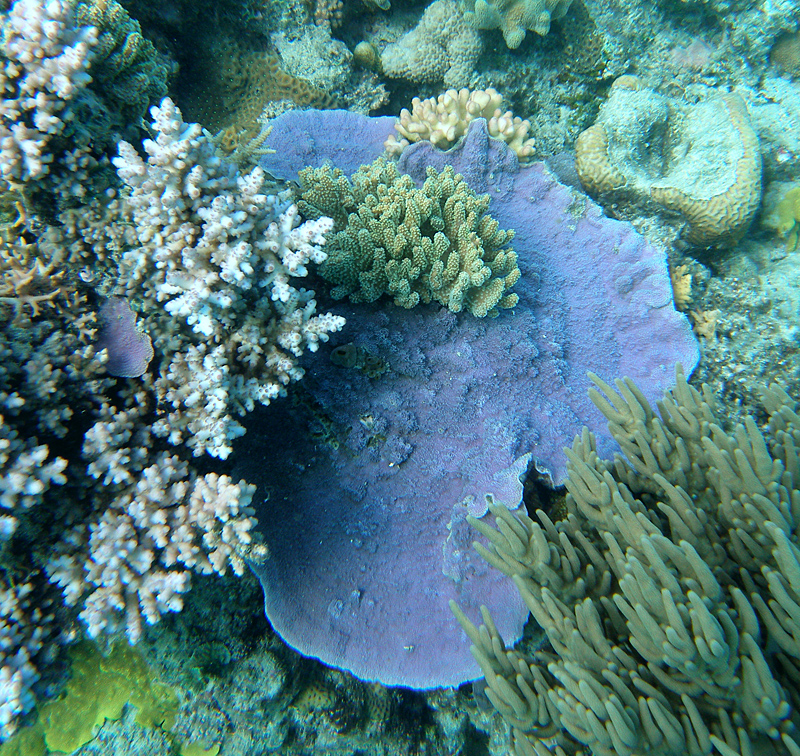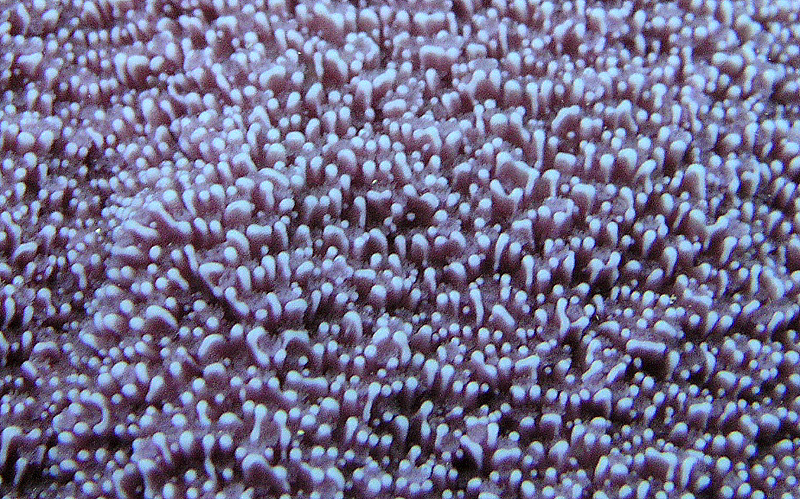
©Andy: A colony of Montipora monasteriata showing the typical encrusting growth form and purpleshort sturdy branches

©Andy: A macro image of Montipora monasteriata showing the small corallites and the papillae on the surface of the skeleton
Distinguishing features
A species that forms simple or tiered plates, and encrusting colonies. Corallites are mostly small and immersed in the skeletal matrix, and the surface of the colony is covered by obvious papillae. Most specimens are blue-purple or pale brown.
Size
- Size data has not been obtained.
Synonyms
Distribution and habitat preferences
Upper reef slopes, reef flats and back reef areas.
Can be found in most shallow habitats around Lizard Island.
Behaviour
Corals in the genus Montipora are gonochoric (seperately sexed) broadcast spawners, and are unique amongst the Acroporidae in that the oocytes already contain zooxanthellae upon release.
Montipora monasteriata has been extensively studied with respect to its alagal symbionts. It can occupy habitats with a wide variety of light regimes, from full sun to almost complete shade within caves and overhangs, and the species has been shown to have remarkable flexibility in its skeletal and tissue morphology, and symbiont photosynthetic efficiency. The endolithic filamentous green algae present in the skeletal matrix of this species have also been studied.
Web resources
References
- Abrego, D., M.J.H. Van Oppen and B.L. Willis (2009). Onset of algal endosymbiont specificity varies among closely related species of Acropora corals during early ontogeny, Molecular Ecology, 18: 3532-3543.
- Anthony, K.R.N. and O. Hoegh-Guldberg (2003). Variation in coral photosynthesis, respiration and growth characteristics in contrasting light microhabitats: an analogue to plants in forest gaps and understoreys? Functional Ecology, 17: 246-259.
- Anthony, K.R.N., M.O. Hoogenboom, J.A. Maynard, A.J. Grottoli and R. Middlebrook (2009). Energetics approach to predicting mortality risk from environmental stress: a case study of coral bleaching, Functional Ecology, 23: 539-550.
- View all references
